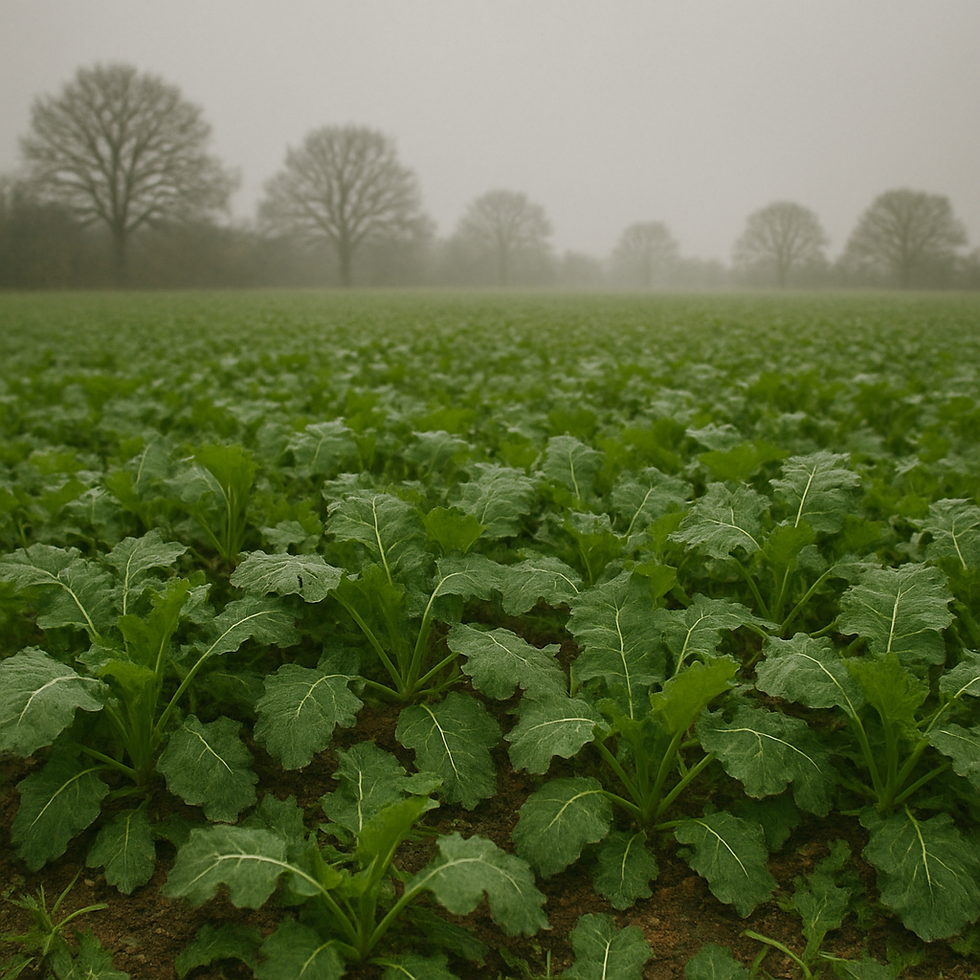Grass Isn’t Just Grass: Why Pasture Nutrition Makes or Breaks Livestock Performance
- Soil Fertility Services Ltd

- Oct 6
- 3 min read
Stand in any stockman’s field and you’ll hear the same old line: “Grass is the cheapest feed you’ll ever grow.”
True enough, but only if that grass actually feeds.
It’s easy to be lulled by the sight of a green field, but the colour doesn’t tell the whole story. A field can appear lush yet be low in protein, lacking minerals, or deficient in sugars. And when that happens, stock start telling you in the only language they know: poor milk yield, fertility frustrations, slower growth rates, foot trouble, and vet bills that always arrive on a Friday afternoon.
Grass is never just grass. It’s the foundation of your ration. Which means it deserves the same attention as a carefully balanced TMR without the diesel bill for the mixer wagon.
A Patchwork Approach (and Why It Lets You Down)
Farms already know the game. You spread nitrogen in spring, perhaps sulphur if you remember, then keep an eye on stock condition and dose with boluses when something looks off. The local representative offers a mineral lick, a veterinarian suggests copper, and the agronomist waves another invoice for potash.
It’s a patchwork quilt of products and jobs. Each one has its place, but together they’re disjointed, time-consuming, and often expensive. Worse still, the cow doesn’t care that you bolused last week or that you limed the silage ground in October. She just cares whether her rumen gets what it needs today.
That’s the catch: patchwork nutrition often leaves gaps. And when the gaps show up, performance slips quietly but steadily.
BetterGrass: A Joined-Up Plan
This is where BetterGrass steps in. It assembles the scattered puzzle pieces of grassland nutrition into a clear picture.
BetterGrass is a plan that feeds both the sward and the stock, creating a steady base of nutrition that eliminates the need for constant topping up.
For the grass: Background nutrition keeps growth steady instead of lurching from “flush” to “flatline.” Stronger, healthier swards mean better utilisation and higher-quality forage in the clamp.
For livestock: balanced trace elements flow through the pasture into the animals. Copper strengthens immunity and reproduction. Manganese underpins bone and breeding. Zinc keeps skin and hoofs sound, reducing lameness issues. Iodine keeps the thyroid ticking for healthy calves and lively lambs.
For the farmer: One application replaces a raft of jobs, saving time, labour, and a filing cabinet of invoices. Simplicity is the absolute luxury here.
Think of it as swapping a fridge full of random tins for one balanced Sunday roast: everything on the plate, in the right proportion, and nobody leaves the table hungry.
Why It Matters More Than Ever

UK grassland makes up nearly two-thirds of all farmland. It should be our competitive advantage, homegrown feed that keeps costs down. However, we often treat it as background scenery rather than the engine of production.
Get grass nutrition wrong and the costs sneak in through the back door:
Higher meal bills when forage isn’t up to scratch.
Vet interventions on fertility or lameness.
Wasted time handling cattle for boluses or chasing a mineral deficiency.
Get it right and the opposite happens:
Milk holds up through the season without a yo-yo effect.
Calves and lambs hit growth targets earlier.
The vet visits less, and usually just for a coffee.
BetterGrass won’t replace good grazing management, but it does make sure that every mouthful your stock takes is pulling its weight.
The Bottom Line
Grass is the cheapest feed you’ll ever grow but only if you manage it as more than just “green stuff.” Nutrition is the difference between a field that fills the tank and one that leaves you filling gaps with meal, boluses, and vet time.
So before you order another pallet of minerals or chase a dozen separate jobs across the farm, ask yourself: is my grass feeding stock properly, or am I just feeding habits? With BetterGrass, you let the sward do the talking and the stock do the thriving.





Comments